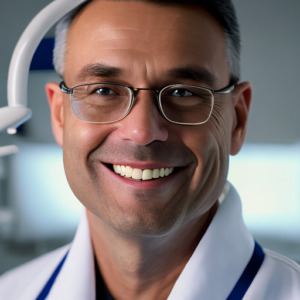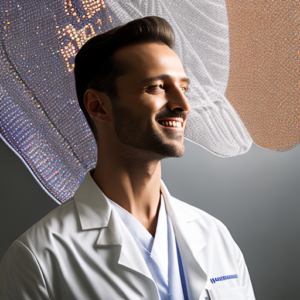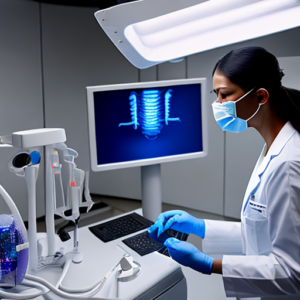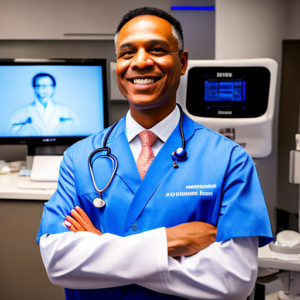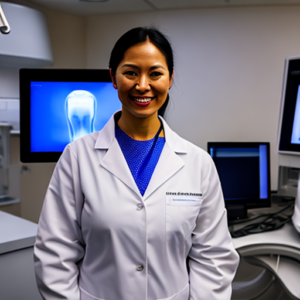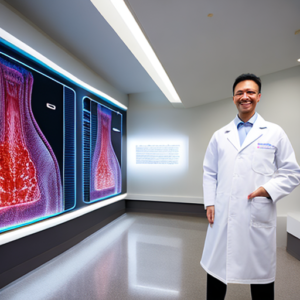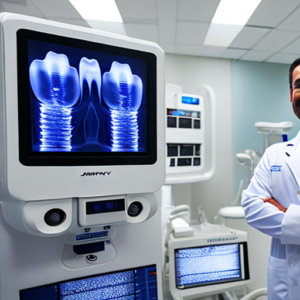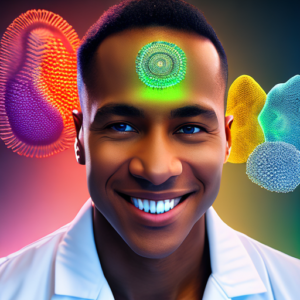Are you a dentist struggling to keep pace with the increasing volume of dental x-rays? The sheer time commitment involved in meticulously reviewing each image, searching for subtle signs of decay or disease, can be incredibly demanding and prone to human error. Traditional radiographic interpretation relies heavily on the experience and skill of the radiologist, yet variations in expertise and subjective interpretations inevitably lead to inconsistencies in diagnosis. The need for faster, more accurate diagnoses is paramount in modern dentistry – a crucial element in proactive patient care.
Introduction: A New Era in Dental Imaging
The field of dental radiography is undergoing a dramatic transformation thanks to the rise of artificial intelligence (AI). Specifically, automated tooth detection algorithms are emerging as powerful tools for assisting dentists and radiologists. These systems utilize machine learning techniques – a subset of AI – to identify and locate teeth within x-ray images with remarkable precision. This isn’t about replacing human expertise; rather, it’s about augmenting it, providing a crucial first pass and flagging areas that require closer scrutiny. This technology promises to significantly enhance diagnostic accuracy, streamline workflows, and ultimately improve patient outcomes.
The core principle behind this innovation lies in training AI models on vast datasets of dental x-rays. These models learn to recognize the unique visual characteristics associated with different teeth – their shape, size, density, and surrounding anatomical structures. Once trained, these algorithms can quickly analyze new x-ray images, generating reports highlighting potential areas of concern. For example, a system could identify a small carious lesion (cavity) that might be easily missed during a routine visual scan.
The Technology Behind AI for Automated Tooth Detection
Image Preprocessing
Before an AI model can analyze dental x-ray images, the images typically undergo preprocessing. This step involves several techniques to prepare the images for optimal performance. Common preprocessing steps include noise reduction – removing random variations in pixel intensity – histogram equalization – improving contrast and visibility of structures – and standardization – ensuring all images have a similar scale. These processes are critical as x-ray images can be affected by various factors such as exposure levels, film quality, and patient positioning.
Machine Learning Algorithms
Several machine learning algorithms are utilized for automated tooth detection. Convolutional Neural Networks (CNNs) are the most prevalent due to their effectiveness in processing image data. CNNs learn hierarchical representations of features, starting with basic elements like edges and corners and progressing to more complex shapes representing teeth. Recurrent Neural Networks (RNNs) have also been experimented with for analyzing sequences of images during a scan.
Training Data
The performance of an AI model is heavily dependent on the quality and quantity of training data. Datasets used to train these algorithms contain thousands, sometimes tens of thousands, of dental x-ray images meticulously labeled by experienced radiologists. Each image is annotated with the location and type of each tooth. This meticulous labeling process ensures that the AI system learns accurate patterns for identifying teeth across various anatomical variations and imaging techniques. The use of diverse datasets – including different types of x-rays (e.g., bitewings, panoramic) and patient demographics – is crucial for creating robust and generalizable models.
Applications and Real-World Examples
Caries Detection
One of the most promising applications of AI in dental imaging is caries detection. Studies have shown that AI algorithms can achieve accuracy rates comparable to, or even exceeding, those of experienced radiologists in identifying early signs of decay. A study published in Dental Health Journal reported an AI system achieving a sensitivity of 92% and specificity of 88% for detecting caries on bitewing radiographs – significantly higher than the average performance of general practitioners.
Periodontal Disease Assessment
AI can also assist in assessing periodontal disease, which involves inflammation and destruction of the tissues supporting teeth. Algorithms can be trained to identify bone loss around teeth, a key indicator of periodontal health. For instance, research at the University of California, San Francisco, demonstrated that an AI model could accurately predict the severity of periodontitis based on panoramic x-ray images with an accuracy rate of 85%.
Root Canal Detection
Automated tooth detection can also be used to identify areas where root canal treatment has been performed. By analyzing the density and shape of teeth, AI algorithms can differentiate between vital and non-vital teeth. This information is valuable for planning subsequent dental procedures.
Benefits and Advantages of Implementing AI
- Improved Diagnostic Accuracy: AI systems provide objective, consistent interpretations, reducing subjectivity and minimizing errors.
- Increased Efficiency: Automation speeds up the radiographic interpretation process, allowing dentists to see more patients. A study by Colgate estimated that AI could reduce the average time spent interpreting dental x-rays by 30-50 percent.
- Early Detection of Disease: AI can detect subtle changes indicative of early-stage disease before they are visible to the naked eye, leading to proactive treatment and better outcomes.
- Reduced Workload for Radiologists: AI assists radiologists by flagging suspicious areas, enabling them to focus on complex cases.
- Cost Savings: Increased efficiency and reduced errors can lead to significant cost savings in the long run.
Challenges and Limitations
Data Bias
A major challenge is data bias. If the training dataset predominantly features images from a specific patient population (e.g., white individuals with certain dental habits), the AI model may perform poorly on patients from different backgrounds. Addressing this requires carefully curated, diverse datasets.
Algorithm Explainability
Many current AI algorithms – particularly deep learning models – are “black boxes,” meaning it’s difficult to understand how they arrive at their conclusions. This lack of explainability can make it challenging for dentists to trust the system’s recommendations and integrate them into their clinical workflow. Research is ongoing to develop more transparent and interpretable AI models.
Regulatory Approval
The use of AI in medical imaging is subject to regulatory scrutiny. AI-based dental diagnostic tools must undergo rigorous testing and validation before they can be approved for widespread clinical use. The FDA (Food and Drug Administration) plays a crucial role in evaluating the safety and effectiveness of these technologies.
Future Trends
Federated Learning
Federated learning allows AI models to be trained on data from multiple sources without sharing the raw data itself. This approach addresses privacy concerns and enables the development of more robust models based on diverse datasets.
Multi-Modal Imaging
Future systems will likely integrate information from multiple imaging modalities – such as x-rays, computed tomography (CT) scans, and magnetic resonance imaging (MRI) – to provide a more comprehensive view of the patient’s oral health.
Personalized Dentistry
AI will play an increasingly important role in personalized dentistry. By analyzing individual patient data, AI systems can tailor treatment plans based on their specific needs and risk factors. The convergence of AI and personalized medicine promises to revolutionize the way we approach dental care.
Conclusion
Implementing AI for automated tooth detection in dental x-ray images represents a significant step forward in the field of dentistry. While challenges remain regarding data bias and algorithm explainability, the potential benefits – including improved diagnostic accuracy, increased efficiency, and early disease detection – are undeniable. As AI technology continues to evolve and become more integrated into clinical practice, we can expect to see even greater advancements in dental care and ultimately, better outcomes for patients.
Key Takeaways
- AI is transforming dental radiography by automating tooth detection.
- Machine learning algorithms trained on large datasets can achieve high accuracy rates.
- The technology has numerous applications, including caries detection and periodontal disease assessment.
- Addressing data bias and algorithm explainability are crucial for successful implementation.
Frequently Asked Questions (FAQs)
- Q: Is AI going to replace dentists? A: No, AI is designed to augment the expertise of dentists, not replace them. It acts as a valuable tool for assisting in diagnosis and workflow optimization.
- Q: How accurate are AI-based tooth detection systems? A: Accuracy rates vary depending on the algorithm and training data, but many systems achieve sensitivities and specificities comparable to experienced radiologists.
- Q: What type of data is needed to train an AI model? A: The system requires a large dataset of labeled dental x-ray images – typically thousands of images with annotations indicating the location and type of each tooth.
- Q: How will AI impact my workflow as a dentist? A: By flagging suspicious areas, AI can streamline your workflow, allowing you to focus on complex cases and improve patient care.




